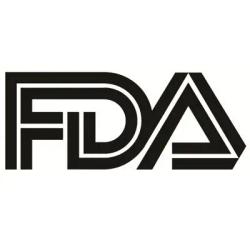
OR WAIT null SECS
Risks, Benefits of Current Food Allergy Therapies, with Aikaterini Anagnostou, MD, PhD
HCPLive spoke with Anagnostou at AAAAI on how to determine what food allergy treatment patients should undergo.
The 2 FDA-approved food allergy therapies—oral immunotherapy for peanut allergy and omalizumab for single or multiple food allergies—each come with their own risks and benefits.
Aikaterini Anagnostou, MD, MSc, PhD, the director of the Food Immunology Program at Texas Children’s Hospital, presented the session, “Navigating the Landscape of Food Allergies,” at the 2025 American Academy of Allergy, Asthma, & Immunology (AAAAI) annual meeting in San Diego on Friday, February 28. HCPLive spoke with Anagnostou about evaluating the best treatment options for food allergies, weighing their risks and benefits.
“The main benefit from both of these therapies is raising the threshold of reactivity in patients with food allergies, meaning that patients can tolerate a larger amount of food while on the therapy compared to baseline,” Anagnostou said. “This has also the benefit of protecting patients from allergic reactions, accidental exposures, as well as severe reactions such as anaphylaxis.”
Anagnostou considers several factors in determining treatment, including the food allergy diagnosis, the likelihood of outgrowing it, frequency and severity of accidental exposures and their impact on the patient’s quality of life, the nutritional burden, history of anaphylaxis, and the patient’s treatment goals.
“Goals and preferences from patients and families are very important,” Anagnostou said.
For instance, a patient might be reluctant to use epinephrine—or simply do not want to carry it around.
For patients with comorbidities such as uncontrolled asthma or allergic rhinitis, Anagnostou noted that while these are not contraindications for starting food allergy therapy, managing them beforehand may be beneficial.
Oral immunotherapy and omalizumab, although sharing the same benefits, have different risks. Risks associated with oral immunotherapy include adverse allergic reactions during therapy. Moreover, the most common risk associated with omalizumab includes site injection-related reactions.
Recently, there has been more of an emphasis on shared decision-making in the management of food allergies. Anagnostou talks with her patients about the risks and benefits of each treatment and listens to their therapy preferences and goals. Some patients may prefer protection from accidental exposures, and others may want to reduce the anaphylaxis risk.
“I work with my families; I listen to what they are aiming to achieve through undertaking a food allergy therapy, and we make a decision together on the one that best fits their preferences and values,” Anagnostou said.
Relevant disclosures for Anagnostou include Genetech USA, Inc, Genetech Inc, and Novartis Pharmaceuticals Corporation.
References
Anagnostou A, Rachid R, Chinthrajah R, et al. Navigating the Landscape of Food Allergy Therapies. Presented at AAAAI 2025 in San Diego on February 28.
Related Content:


